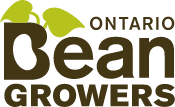Call for Research Proposals
Currently, there is no open call for research proposals. However, the Research Committee and Board of Directors will consider proposals on an ongoing basis. Researchers should note that decision timelines when submitting a proposal when there is no open call could be lengthy.
If you could like to be included on our research contact list to receive future call for proposals please Email jennifer@ontariobeans.on.ca.
Research Priorities
The following research priorities were identified by OBG’s Board of Directors and District Delegates as being most important to bean growers in Ontario. the priorities were compiled at the annual research Day held in August 2017 and were refined with assistance from the Ontario ministry of agriculture and food’s Edible bean specialist. The priorities were reviewed and updated in the spring of 2021.
In addition to the priorities below, OBG has worked with the other provincial pulse grower groups and Pulse Canada to develop a National Pulse Research Strategy that will help guide investment and collaboration at the national level.
Breeding
- Increased yield in all market classes
- New varieties adapted to Ontario conditions as well as end use markets, particularly cranberry and kidney beans
- Earlier maturing varieties in each market class – Continue to improve maturity
- Focus on natural, but even maturity
- Focus on varieties exhibiting drought resistance
- Improved resistance to root rots, including Fusarium and Rhizoctonia
- Development of resistance to insect pests, e.g. leaf hopper, Western Bean Cutworm, spider mites, etc.
- Breeding for desirable plant architecture, e.g. tall, erect bean plants with higher pod set for direct harvesting, and open architecture for reduced susceptibility to white mould
- Improved root systems for enhanced vigour and nutrient uptake, and reduced lodging
- Improving resistance to diseases and insects with a goal of improving yield
- Can we take what we learned from Dynasty to improve other varieties?
- Resistance to white mold, anthracnose
Focus on moving towards Ontario seed production
Weed Management
- Identification of best management practices for controlling Canada fleabane in each bean market class, with consideration for glyphosate resistant fleabane and other Group 2 resistant weeds prevalent in Ontario (e.g. the crop safety of pre-emergence treatment with Eragon and 2,4-D)
- Continued development of new and improved broadleaf weed management options for each market class, with consideration for the prevalence of Group 2 resistant weeds
- Always consider market access when evaluating weed management products
Pest/Disease Management
- Improved management of Western Bean Cutworm, including scouting techniques, treatment thresholds, control measures and improved understanding of WBC activity and reproductive biology in Ontario
- Evaluation and registration of new fungicide and insecticide seed treatments in Ontario, particularly replacement of neonicotinoids and access to effective products available in the US
- Continued evaluation of management practices and fungicides for white mould control, including development of forecasting tools
- Evaluation of spray quality parameters, with a focus on achieving good coverage with fungicide applications
- Evaluation of the impact of soybean cyst nematode (SCN) on bean market classes
Agronomy
- Identification of best management practices for controlling
- Evaluation of reduced tillage systems (e.g. no-till, strip till, etc.), especially for small seeded bean classes, with consideration for methods of applying and incorporating fertilizer and herbicides in these systems
- Development of effective cover crop techniques for bean cropping systems, including quantification of nitrogen credits, soil health improvements and impact on weed control
- Evaluation of precision planting techniques and the opportunity to use variable rate seeding to reduce costs and manage white mould
- Innovative techniques to maximize economic yield
- Planting date studies – higher yielding varieties are getting into being indeterminate
- Interaction of biologicals and inoculants and what they could for dry beans
- Where should biologicals/inoculants be used and where will they have a benefit
Other
- Continuing assessment of the health benefits of consuming Continuing assessment of the health benefits of consuming beans, including evaluation of differences between specific market classes and varieties
- Development of data to support federal health claims for beans
- Increased inclusion of beans on menus of popular restaurant chains and in institutions
- Development of new food uses for beans that are connected to emerging and existing markets










